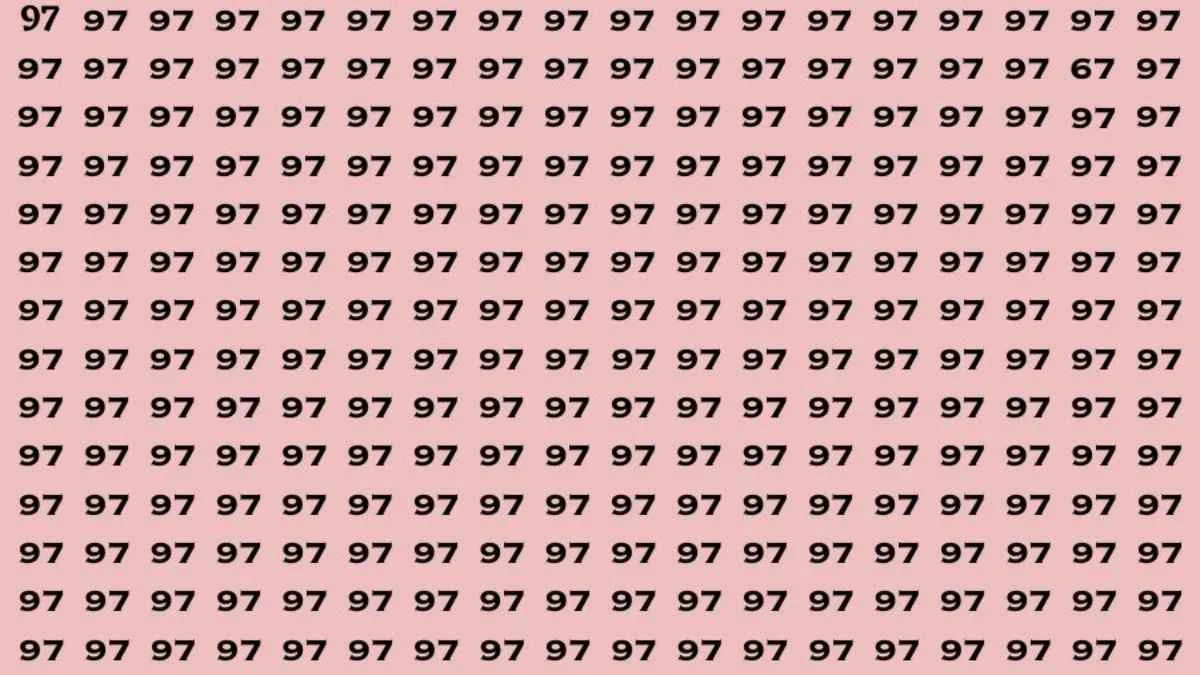Optical illusions have long captivated the human mind, challenging our perception and understanding of reality.
From ambiguous figures to mind-boggling patterns, these illusions often reveal the complex workings of our visual system.
Among the myriad optical illusions that have fascinated researchers and enthusiasts alike, the “94 Among 64” challenge stands out as a testament to the intricate interplay between perception and cognition.
In this article, we delve into the depths of this fascinating illusion, exploring its origins, mechanics, and the implications it holds for our understanding of intelligence.
Origins of the 94 Among 64 Challenge:

The origins of the 94 Among 64 challenge can be traced back to the proliferation of optical illusions on social media platforms and online forums.
In the digital age, these illusions have gained widespread popularity, captivating audiences with their ability to deceive and confound.
The 94 Among 64 challenge, in particular, gained traction due to its simplicity and deceptive nature.
The challenge typically presents participants with a grid containing numerous instances of the number 64, with one hidden instance of the number 94 concealed among them.
The task is deceptively simple: identify the hidden number 94 within a specified time limit, often set at 9 seconds.
Despite its apparent simplicity, the challenge has stumped many, leading to speculation about the cognitive mechanisms underlying our perception of visual stimuli.
Mechanics of Visual Perception:
To understand why the 94 Among 64 challenge poses such a significant cognitive hurdle, it is essential to delve into the mechanics of visual perception.
Our visual system is a complex network of interconnected processes, encompassing everything from the reception of light by the retina to the interpretation of visual stimuli by the brain.
One fundamental aspect of visual perception is pattern recognition, the ability to discern meaningful information from complex visual stimuli.
This process relies on a combination of bottom-up processing, in which basic visual features are extracted and analyzed, and top-down processing, in which prior knowledge and expectations influence perception.
In the context of the 94 Among 64 challenge, participants must rely on their ability to detect subtle deviations from the expected pattern of the number 64.
This task engages both bottom-up and top-down processes, as participants scan the grid for visual cues while simultaneously drawing upon their knowledge of numerical patterns.
Challenges and Implications:
The 94 Among 64 challenge poses several challenges to participants, reflecting the intricate nature of visual perception and cognition.
One key challenge is the phenomenon of inattentional blindness, wherein individuals fail to perceive unexpected stimuli due to the allocation of attention elsewhere.
In the context of the challenge, participants may become so focused on identifying instances of the number 94 that they overlook its presence when it deviates from their expectations.
This phenomenon highlights the limitations of selective attention and the role it plays in shaping our perception of the world around us.
Moreover, the 94 Among 64 challenge sheds light on individual differences in perceptual ability and cognitive processing.
While some individuals may quickly spot the hidden number 94, others may struggle to do so despite repeated attempts.
These differences may reflect variations in factors such as attentional control, visual acuity, and cognitive flexibility.
Furthermore, the challenge raises intriguing questions about the nature of intelligence and its relationship to perceptual abilities.
Traditionally, intelligence has been conceptualized in terms of cognitive processes such as reasoning, problem-solving, and memory.
However, the ability to perceive and interpret complex visual stimuli may also be indicative of intelligence, suggesting a broader definition of cognitive aptitude.
Conclusion:
The 94 Among 64 challenge offers a captivating glimpse into the intricacies of visual perception and cognitive processing.
As participants strive to identify the hidden number 94 within a sea of 64s, they are confronted with the complexities of selective attention, pattern recognition, and cognitive flexibility.
Beyond its entertainment value, the challenge holds implications for our understanding of intelligence and perceptual abilities.
By probing the limits of our visual system, it invites us to reconsider the nature of intelligence and the diverse ways in which it manifests.
Whether you’re a seasoned puzzler or a casual observer, the 94 Among 64 challenge serves as a reminder of the boundless mysteries that lie beneath the surface of our perception.
So, the next time you encounter a grid of numbers, take a moment to pause, observe, and perhaps uncover the hidden truths that await within.
